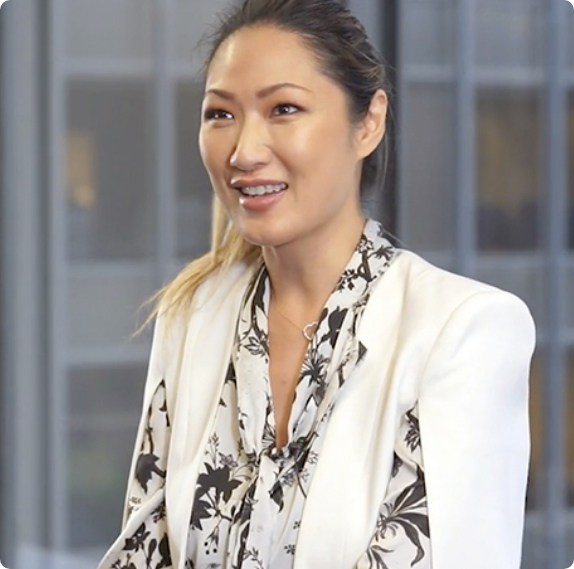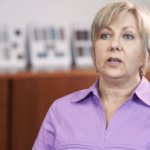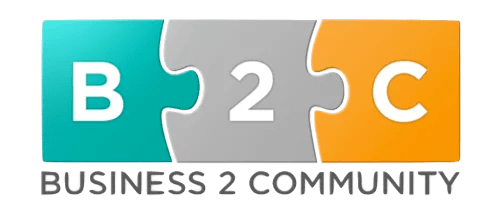Unleash the GROWTH FORMULA
Are you looking for a proven way to grow your B2B business in a competitive and dynamic market? Do you want to learn how to attract, convert, and retain more customers using a simple and effective framework? If so, then this guide is for you.
It’s your practical manual to navigating the intricate paths of business expansion, drawing on two fundamental frameworks: the Demand Pyramid and the Growth Formula.
As we embark on this journey together, you'll gain insights into engaging potential clients, capturing demand, creating awareness, managing and nurturing leads, and fortifying customer relationships.
Explore these concepts and strategies to take your businesses to new heights!
Demand Pyramid
Understanding the Demand Pyramid is crucial for any B2B company aiming for sustained growth. This concept outlines the different stages potential clients go through before making a purchase decision. By comprehending these stages, you can tailor your marketing strategy to effectively engage with your audience. Let's delve into the details:

At its core, the Demand Pyramid represents the journey a potential client takes before becoming an active buyer. The stages, from top to bottom, are as follows:
- Unaware of the problem (30%): This group is not interested in your solution as they are oblivious to the problem.
- Problem aware (30%): Individuals in this stage acknowledge a problem but do not feel an immediate need to purchase a solution.
- Solution aware (30%): This segment recognizes the need for a solution but is not yet prepared to make a purchase.
- Consideration (7%): A small percentage intends to buy and is actively considering options.
- Decision (3%): This is the group of active buyers who are ready to make a decision.

Why it Matters
Understanding the Demand Pyramid is crucial because only a small fraction, 1-3% of the market, is actively buying at any given time. This leaves a vast untapped potential within the remaining 97%. Whether they are aware of their problem or not, this majority represents an opportunity for strategic engagement.
Turning Knowledge into Action
Here are three key strategies to leverage the Demand Pyramid for your business:
- Active Buyers vs. Potential Market:
- Recognize the distinction between active buyers and the broader market.
- Don't solely focus on the 1-3% actively buying; instead, consider the larger untapped potential.
- Educate, Don't Just Sell:
- Shift your strategy from being sales-driven to education-driven.
- Position your brand as the solution that's ready when potential clients are prepared to make a purchase.
- Maximizing Your Market Reach:
- Tailor your approach based on where your audience falls within the pyramid.
- This targeted strategy ensures a more significant impact and sustainable growth.
Understanding the Demand Pyramid provides a roadmap for effective engagement, allowing your B2B business to capitalize on the full spectrum of potential clients.
In the next chapter, we're moving from understanding how people become aware of a problem to developing a comprehensive plan on how to grow your business.

The Growth Formula
Now that you've got a handle on how the Demand Pyramid works, let's talk about something equally important: the Growth Formula.
Think of it like this – if the Demand Pyramid was your roadmap, the Growth Formula is the vehicle that helps you navigate the roads and reach your destination. It's a smart way to make your business not just bigger but also more successful in the long run.
The growth formula framework is simple:
Acquisition + Retention = Growth
This framework consists of four pivotal sections, each tailored to address specific facets of B2B growth:
By embracing the Growth Formula framework, you gain the ability to implement marketing and sales strategies that are both effective and efficient. This isn’t just about growing your B2B business; it’s about doing so faster and smarter.
Now that we’ve grasped the fundamental principles of the Growth Formula, let’s zoom in on each of its critical aspects.
Capture Demand
How to capture the existing demand for your products or services and convert those active buyers to customers.
Create Awareness
How to increase your visibility and credibility in your target market and generate more interest and buyers for your business
Manage and Nurture Leads
How to manage and nurture your leads and move them along the sales funnel until they become customers.
Manage and Nurture Customers
How to manage and nurture your existing customers and increase their loyalty, satisfaction, and lifetime value.
Capture Demand
70% of people conduct their own research online before making any B2B purchasing decisions.
Worldwide Business Research (WBR)
If you find yourself in an established market with existing demand for your products or services, you can capitalize on it by attracting the attention of your in-market buyers. When potential customers are trying to find a solution to their problem, be found for what you have to offer. It’s your job to stay at the top of their minds if you want to capture the existing demand. In such a market, where major players have set buying criteria, educated the industry, and provided solutions well understood by buyers, your priority should be ensuring that you get found when someone actively searches for your product or services before they choose your competitors
In other words, capture the existing demand on intent channels like search engines. This means fixing the bottom of the funnel. Ensure you're reaching all the in-market buyers who are actively in a buying cycle, searching for a product or service that matches your offerings, finding you, and considering you in their decision-making process. This accounts for the 1 to 3% of active in-market buyers who are more likely to convert to customers in a very short time span, as far as sales cycles are concerned.
Tactics:
- Organic Search and SEO
- Paid Search and PPC
- Landing Pages
- Lead Magnets
- Forms
- Chatbots
- Exit Pop-ups
- Industry Directory Listings
Create Awareness
42% of sales reps spend more time selling when provided with qualified sales leads.
DemandGen Report
92% of website visitors leave without converting into a lead.
Reimagining Commerce Report
If you're entering a new market or introducing unique solutions different from what's currently popular, you need to create awareness about your product or solutions through the awareness channel.
This involves understanding the customer journey. While it's not entirely linear, you can generally conclude that the customer starts as unaware, becomes problem-aware, then solution-aware, and finally, brand-aware of you.
Path to Purchase is NOT Linear

To educate the customer, you should know your buyer personas, understand your ideal customer profiles, be familiar with where they gather information and insights and know the type of content they prefer. Once you've grasped these aspects, become a subject matter expert, providing insights and best practices for your customers.
Be so involved in their business world that you understand problems they might not articulate themselves. This way, you educate them to become problem-aware, solution-aware and ultimately brand-aware.
Create valuable and educational content and distribute it on a large scale to reach buyers at different stages of the buyer journey. When done effectively, this creates awareness for your products and services, positioning you as the one setting the buying criteria and leading people to consider your offering above all competing alternatives.
Brand awareness is crucial for B2B businesses because it helps you:
- Stand out from competitors and differentiate your value proposition.
- Build trust and credibility with potential customers and partners.
- Generate more traffic and leads for your website and landing pages.
- Increase conversion and retention rates, reducing customer acquisition costs.
- Enhance customer loyalty and advocacy, generating more referrals and reviews.
Tactics
Inbound Tactics
- Blogs
- eBooks / Guides
- Videos
- Podcasts
- Webinars
- Infographics
- Sponsorships
- Social Ads
- Digital PR
Outbound Tactics
- Cold calling
- Cold Emails
- Direct Mail
Manage and Nurture Leads
79% of marketing leads never convert to sales. Lack of lead nurturing is the most common cause of this poor performance.
MarketingSherpa
Nurtured leads produce, on average, a 20% increase in sales opportunities versus non-nurtured leads.
DemandGen Report
Lead management and nurturing is the process of moving your leads along the sales funnel and preparing them for the purchase decision and the sales conversation.
79% of marketing leads never convert to sales. Lack of lead nurturing is the most common cause of this poor performance.
Lead management and nurturing is important for B2B businesses as it helps you:
- Increase your lead quality and quantity by qualifying and verifying your leads and filtering out the uninterested or unqualified ones
- Increase your lead conversion and closing rates by following up and reaching out to your leads and persuading them to buy from you
- Reduce your lead leakage and loss by maintaining and enhancing your relationship with your leads and keeping them engaged and interested in your brand
- Improve your sales efficiency and effectiveness by aligning your marketing and sales teams and processes, and by providing your sales reps with relevant and timely information and insights about your leads
There are two main types of leads that you need to segment and manage differently: qualified and unqualified. Qualified leads are those that have shown interest and intent to buy from you, and that match your ideal customer profile and criteria. Unqualified leads are those that have not shown interest or intent to buy from you, or that do not match your ideal customer profile and criteria.
Tactics
- Lead scoring & prioritization
- Lead routing & assignment
- Email Marketing
- Lead follow-up & outreach
- Lead nurturing campaigns & workflows
- Retargeting Ads
- Direct Mail
Manage and Nurture Customers
Acquiring a new customer is anywhere from five to 25 times more expensive than retaining an existing one.
Harvard Business Review (HBR)
Acquiring a new customer is anywhere from five to 25 times more expensive than retaining an existing one. The Growth Formula Framework takes into account the managing and nurturing of existing customers.
Customer management and nurturing is the process of maintaining and enhancing your relationship with your customers and ensuring their satisfaction, loyalty, and retention.
Customer management and nurturing is important for B2B businesses as it helps you:
- Increase your customer lifetime value and revenue by upselling and cross-selling your products or services
- Reduce your customer churn and attrition by providing excellent customer service and support
- Generate more referrals and reviews from your customers and turn them into advocates and promoters for your brand Improve your product development and innovation by collecting and analyzing customer feedback and data
There are two main types of customer management and nurturing strategies: transactional and relational. Transactional customer management and nurturing strategies are those that focus on individual transactions and interactions with your customers, such as sending invoices, receipts, confirmations, or reminders.
Relational customer management and nurturing strategies are those that focus on the long-term relationship and emotional connection with your customers, such as sending newsletters, offers, surveys, or thank-you notes.
Tactics:
- CRM Systems
- Customer Loyalty Programs
- Customer Feedback and Surveys (NPS)
- Winback Campaigns
- Cross-sell and Upsell
- Re-engagement
Final note
We conclude our journey through the Demand Pyramid and Growth Formula framework. Mastering these concepts can revolutionize the way B2B leaders and marketers approach growth.
By recognizing the nuanced stages potential clients undergo and strategically leveraging acquisition and retention, you're equipped to tap into untapped markets, stand out from competitors, and cultivate lasting customer relationships.
The tools provided in this guide, from capturing demand to nurturing leads and customers, offer a comprehensive toolkit for propelling your B2B business forward.
Implement these strategies, adapt them to your unique business landscape, and watch as sustained growth becomes not just a goal but a reality.
Serious about your growth?
Do you want to implement the Growth Formula Framework in your organization?
Book a free strategy session
























